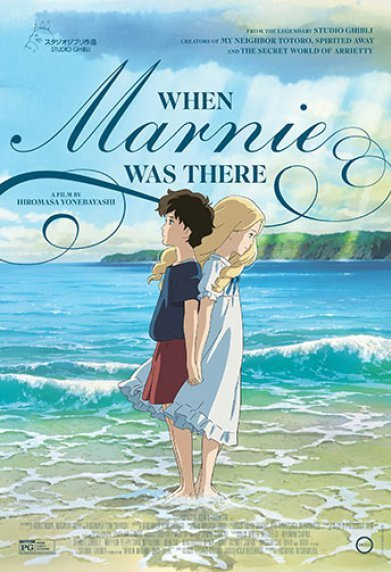film review: when marnie was there
From the get-go, When Marnie Was There, quite possibly the last film from world-famous Studio Ghibli and based on the novel by Joan G. Robinson of the same name, is a tearjerker. The Japanese production house has been producing incredible and heart-wrenching anime films since 1985, with the unforgettable Spirited Away (2001) as Japan’s highest grossing film ever. They announced in late 2014 that the studio would go on hiatus, so the future of the company is up in the air. With that in mind it’s easy to guess that When Marnie Was There is the studio’s way of saying goodbye: and what a goodbye it is.
What makes Studio Ghibli so incredible is the beauty with which their films shine. Their animation style grabs you and pulls you in to whatever fantastical or not-so-fantastical world they are representing. With When Marnie Was There we find no exception. From juicy tomatoes that cut like butter, to the wind-blown hair, to the matte-painted sunsets against a pale marsh, the film oozes with animation skill.
Lost in the imagery and captured by the sounds, imagined smells, and touch of the landscape, we are lured into the world of young Anna. Even as a 12-year-old, Anna feels that she doesn’t belong to the ‘invisible magic circle’ to which most people seem to belong. Her foster mother is worried about her health and so sends her off to a far-away town, settled against a marsh and reminiscent of those sleepy boat yards of childhood family trips down the coast. What Anna finds during her time alone is a friend that finally understands her, Marnie. Marnie, a mysterious child who is also lonely, accepts Anna for who she is. The two girls become instantly inseparable.
But Marnie asks Anna to promise their friendship will remain a secret forever, and from this point onwards we are sent deeper into mystery. Who is Marnie? Can she save Anna, or can Anna save her? I couldn’t say anymore otherwise I’d give away the film’s most precious secret, but Anna learns more about family and friendship than she ever has before, and the moment she blossoms is when the tears flow.
What is most important about When Marnie Was There, however, is that it tackles head on, from the very first scene to the rolling of the credits, the stigma of mental illness. Anna is clearly an outsider in society, and no one understands her except for those who seem to have possibly been through something similar. This struck me very hard, because in my struggle with mental illness I see this same pattern. Those who don’t know what to say are usually those who haven’t been through anything similar, and this is a shame because there are so many good things that can be said. Why aren’t people taught from a young age to deal with these sorts of scenarios? After all, 1 in 4 Australians will experience ill mental health at some point in their life: a staggering figure, but one that’s all too real and relevant.
When Marnie Was There takes this statistic and turns it upside down. We see that with time and understanding, we can move towards a cure for mental illness. Combined with the professional and honest animation and production, this film is not one to miss. With only a short release, you need to snatch this one up quick. Make sure you bring a tissue, or 20.


